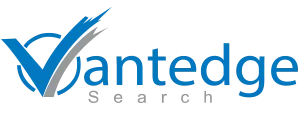
Reimagine HR with Analytics and Personalization
Table of Content
Are you a regular shopper on Amazon? Or maybe a Netflix subscriber or a Spotify addict? Thanks to these and some other indulging brands offering a deeply personalized experience, we’ve come to expect such personalized experiences everywhere we go, including the office. According to a KPMG research, organizations that actively focus on building employee experiences are four times more profitable than those who don’t. Another research by Gallup confirms that businesses with a high level of employee engagement report 21% higher profitability.
The future of HR automation and AI in HR is promising, presenting a compelling business case for personalization. The good news is that HR teams have been experimenting with different ways to personalize the workplace. Employees in some organizations can select individual benefits. DISYS, a global IT consulting and managed services firm, has introduced several recognition initiatives that align with employees’ individual needs and motivations while propelling an uplifting, unified company culture that also keeps employees engaged.
The problem is that most of these initiatives are sporadic and intuitive, rather than part of a well-planned enterprise-wide strategy.
Ring in the power of AI and Big Data
The application of data analytics in human resources and big data in HR is revolutionizing how managers identify individual challenges and build a personalized connect with employees. Managers can now improve their effectiveness by proactively recommending initiatives that can help facilitate employees, and both predict and enhance individual performance.
Experts believe that HR is an art and a science. In the past, only the intuitive and creative aspect of HR has taken precedence. But HR teams can now ditch their intuition-based decisions, and instead use relevant data and insights to personalize at scale and align with business operations.
AI and automation in HR, along with big data and HR analytics in the digital era, are transforming the employee lifecycle from hiring to development. An ML (machine language)-based system to assess skill data gives a more accurate view of the skills available in an organization keeping business goals in mind. It becomes easier for HR to find talent that matches the skills the organization is looking for, as well as provide opportunities to people looking for new experiences. For instance, one organization sources high quality talent through personalized job portals that use AI to extract insights about a prospect’s intent, character and persona. The user then receives personalized job recommendations and content based on his/ her skills, experience, interests and behaviours.
Transform Your Business
with the Right Leadership!
Putting data to good use
Personalizing HR involves collecting employee information, hiring requirements, salaries, churn rate, etc. But HR’s role doesn’t stop at just gathering data on employee efficiency. Instead, it allows HR to observe patterns and extract insights into each process and then take relevant steps to improve these processes. Insights derived from data can also lead to recommendations that assist employees on their career journeys.
Moreover, there are some instances when HR is unable to respond quickly with human interactions. Automating processes and creating compelling digital experiences allows time for quality human interactions. To add a human touch to digital interactions, some HR leaders are creating digital experiences that mimic human interactions via the use of chatbots and virtual assistants. The Marriott Hotel group uses gamification to attract potential employees to their website, putting them in real-life situations in a video game to test them against the various elements that exist in a typical recruitment toolbox.
Having the data context of an employee’s career goals, skills and interests creates a richer corporate experience. For example, knowing that someone has an interest in graphic design or has been a people leader before might lead you to put them on a project or team where those capabilities are important. Another example, do high performers leave more often than low performers in an organization and if so, what is leading to that turnover?
Conclusion
Personalized HR practices are demolishing traditional hierarchical models and paving the way for new ways of working. AI is helping HR teams enhance multiple operations including self-service transactions, payroll, reporting and recruiting and talent acquisition. HR managers can benefit by incorporating AI to improve the overall employee experience and can even help the HR leaders reduce employee churn. However, AI applications need customization and are hard to standardize. The HR managers must determine what results they expect out of their AI application and carefully consider how AI will fit in before adopting a solution.
For organizations with growth aspirations, personalization of people practices is not an option but an essential ingredient to being future-ready. In this age of HR personalization, how ready are you?

